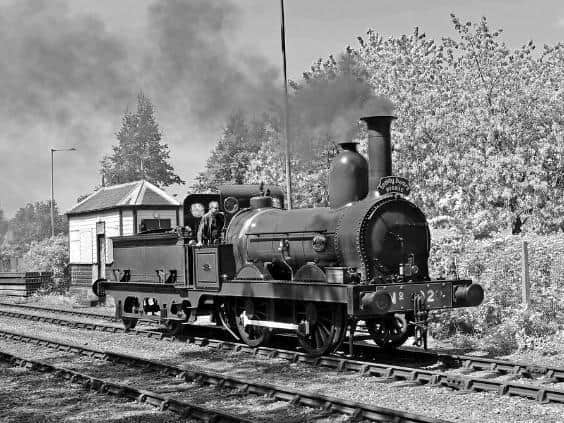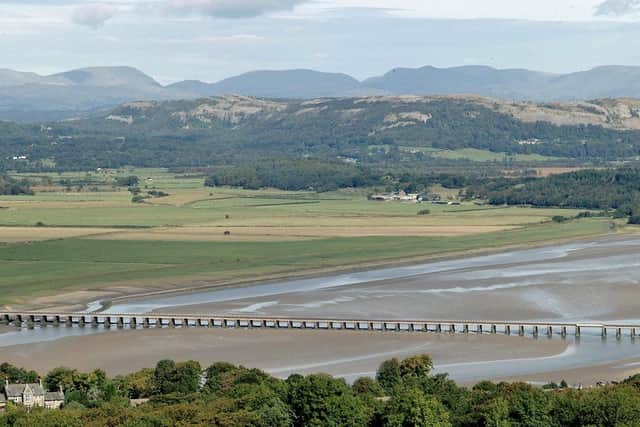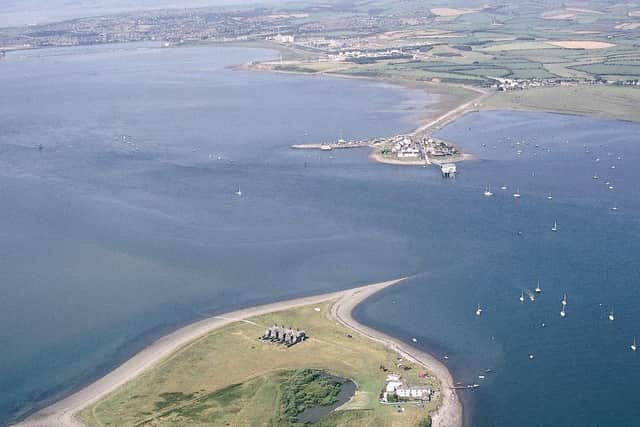Around Morecambe Bay line took to the rails in fits and starts
and live on Freeview channel 276
Unlike other railways in the area whose goal was to push northwards to Carlisle and on to Scotland, or else aim west to the shores of the Irish Sea, the Furness Railway was built in a more piecemeal fashion.
The first proposal for some kind of railway was made by local landowners, the Earl of Burlington, Duke of Buccleugh and Duke of Devonshire, keen to transport iron ore or slate from such locations as Ulverston, Dalton and Kirkby-in-Furness to the port at Barrow.
Advertisement
Hide AdAdvertisement
Hide AdThese attempts were followed in 1846 by the first passenger trains which ran from Dalton-in-Furness to Piel Island where ships would carry them on to Fleetwood. Extensions were added, drawing Broughton, Ulverston, Coniston and Greenodd into the network.


By the early 1900s railway posters were advertising cheap excursions via the steamers Lady Evelyn and Lady Moyra sailing between Barrow and Fleetwood. Another poster featured a new steam yacht, Lady of the Lady, on Coniston Water.
Such services were only made possible by major engineering works. The Leven Viaduct was one of several river crossings and the Bransty Tunnel at Whitehaven extends almost a mile underground, while the last link in the chain, the Arnside Viaduct, was completed over the Kent Estuary in 1857.
There were also mishaps and near disasters.
Locomotive No 115 vanished down a sinkhole in 1892 caused by excessive extraction of iron at Lindal.


Advertisement
Hide AdAdvertisement
Hide AdIn 1903 the night mail was de-railed in gale force winds on the Leven Viaduct, its 33 passengers picking their way to safety back along the viaduct itself.
However, new wealth and industry more than compensated. Barrow in particular expanded in the second half of the 19th
century as successive new industries arrived on the coat-tails of the railway – the ironworks, docks, shipbuilding and steelworks.
Similar growth was brought to Whitehaven and Workington, as well as Carnforth, nearer to home, and its ironworks of 1864.


Advertisement
Hide AdAdvertisement
Hide AdFishermen and farmers were able to get their catches, crops and fresh produce to wider markets while smaller manufacturers found new opportunities too.
The village of Backbarrow for instance was linked to the Furness Railway in 1868 allowing its iron ore and cotton products to be transported along with the blue pigment manufactured there by the Lancashire Ultramarine Company, and known better as Dolly Blue.
By Peter Wade
Comment Guidelines
National World encourages reader discussion on our stories. User feedback, insights and back-and-forth exchanges add a rich layer of context to reporting. Please review our Community Guidelines before commenting.